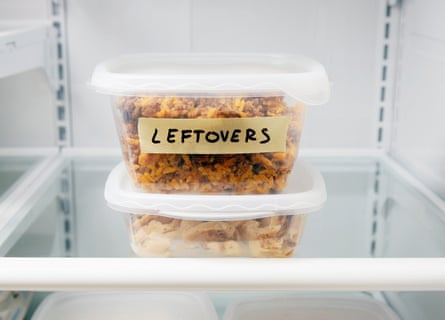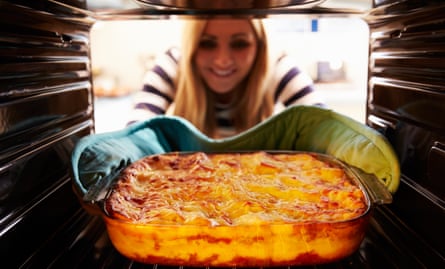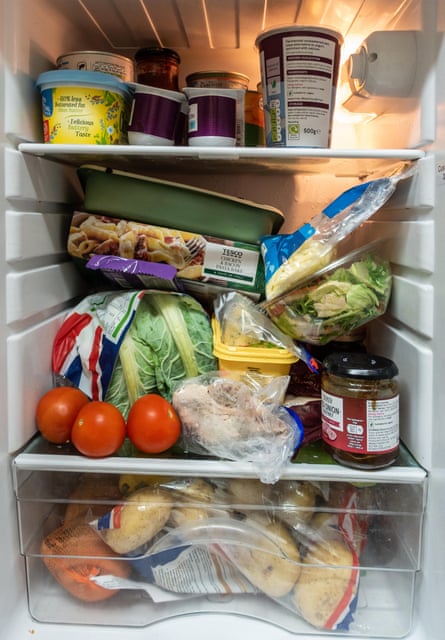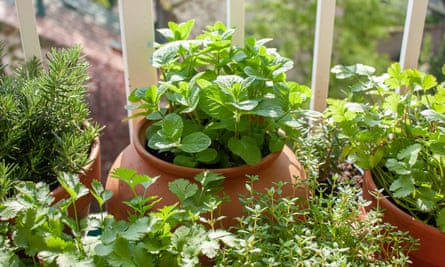With food prices rising at the fastest rate in more than a decade, Britons are trying to make their budget go further in the kitchen by buying cheaper frozen and tinned products and supermarket own-label.
Simon Roberts, the Sainsbury’s chief executive, said this week that customers were watching every penny. They are also making more trips but buying less on each visit, and monitoring the price of their shopping to avoid “till shock” when paying at the end.
With the average annual grocery bill on course to rise by almost £400 this year, there is no magic recipe for price rises of this magnitude but there are ways to reduce costs at home. Here, professional chefs, and the people who train them, offer tips on how to cook on a budget – without cutting the quality of your food.
Set a budget, plan your menu
The Conservative MP Lee Anderson caused a furore when he suggested that nutritious meals could be easily cooked for 30p a time.
Felicity Cloake, the Guardian food writer and the author of Red Sauce Brown Sauce, says it is technically possible to make a meal for as little as that – but only if you have the “luxury of time, the cashflow to buy ingredients in bulk to get the best deal, the knowhow and equipment to do so, and those you’re cooking for are so desperate that they’ll eat anything”.
Resist any urge to impulse buy. If it’s not on the list, it doesn’t go in the trolley
Keeping costs to within a more realistic set limit is possible, though, if you plan ahead carefully. Miguel Barclay, the author of the One Pound Meals range of recipe books, says: “Sit down and plan meals for the whole week. Think of those meals as being connected rather than separate, so you can use the same ingredients in more than one dish, and make a comprehensive shopping list.”
Then, resist any urge to impulse buy. If it’s not on the list, it doesn’t go in the trolley. “There’s no room for improvising with this method,” he says. “You can’t think: ‘Oh look, that pork’s on offer, I’ll buy some,’ because if you do that, you won’t be able to stay within your budget.”
Don’t waste anything
Once you know what you’ll be eating, buy ingredients in the most “whole” form you can, otherwise you will be paying for the processing, even if that’s just trimming off leaves or cutting into pieces. Use your meal plan to ensure nothing gets wasted.
Stella West-Harling, the founder of the Independent Cookery Schools Association and the head of Feeding Devon, part of the Feeding Britain charity network, says roast chicken can make multiple meals: “Boil the chicken for about 30 minutes in a large pan before you roast it,” she says. “Add carrots, celery, and any other vegetables that need using up, to the water. When you drain it, you’ve got chicken stock.”
Use the stock for soup or gravy, or freeze it for future use. Use leftovers from the roast for a pie, risotto, stir-fry or curry. Once you get down to the bones, boil it up again for more stock, combing off the last shreds of chicken.
 View image in fullscreenWeigh up what you can do with leftover food. Photograph: Steven Puetzer/Getty Images
View image in fullscreenWeigh up what you can do with leftover food. Photograph: Steven Puetzer/Getty Images
The same top-to-bottom approach should be taken with vegetables, says Holly Taylor, one of the head chefs at the Brighton restaurant, Kindling. “Using them all up means you get more value for money from the thing that you’ve paid for.”
Broccoli stalks, Taylor says, needn’t be discarded when they are delicious pickled and used as a garnish or in salads. Similarly, Taylor says, make mashed potato by baking the potatoes whole in the oven, cutting them in half and scooping out the fluffy mash, then keep the skins to make loaded potato skins for the next day.
Have an Italian week
When you pluck a recipe from a cookbook you may end up going out and buying everything on the ingredients list. “You might not use those ingredients again, so they’ll just sit in your cupboard,” says Lewis Walker, the deputy head of the Birmingham College of Food. “It’s not cost effective.”
Planning meals around the same groups of flavours, herbs and spices means you are more likely to use up ingredients. “You might say: ‘Right, we’re going to go through an Italian phase for a little while, so I’m going to use all my Italian ingredients over the next few weeks,’” Walker says. “By not diversifying too much you’re always using what you’ve got in the cupboard rather than buying in more.”
Make more from scratch
“I don’t think many people realise tomato-based pasta sauces are so cheap and simple to make, or they wouldn’t buy them,” Cloake says. “Some tins of tomatoes, maybe a clove of garlic or some soft herbs, a pinch of sugar and salt, simmered on a low flame for 30 minutes, and you’ve got something much nicer. It freezes brilliantly, so make more than you need and unearth as necessary.”
 View image in fullscreenHave you thought about making your own tomato-based pasta sauce? Photograph: MychkoAlezander/Getty Images/iStockphoto
View image in fullscreenHave you thought about making your own tomato-based pasta sauce? Photograph: MychkoAlezander/Getty Images/iStockphoto
For comparison (at the time of writing), a 400g tin of plum tomatoes costs 28p in Tesco, while a 350g jar of Loyd Grossman tomato and basil sauce costs £1.90. Even when you take into account the cost of simmering on the hob (between 25p and 50p for an hour’s use, according to the Centre for Sustainable Energy) and the other ingredients, it can still work out cheaper to make your own.
To mop it up, homemade flatbreads and tortillas are hard to beat for value, Barclay says. “I don’t make my own bread but I do make tortillas. They are so quick, simple and cheap – one tortilla comes in at under 1p.” A 1.5kg pack of plain flour is on offer at 45p at Morrisons – with that, plus a little oil and a pinch of salt and some water, you can make 60–70 tortillas. A pack of eight Old El Paso flour tortillas costs £1.45.
Fill your oven
A considerable amount of a household’s energy bill is consumed in the kitchen – with 12% coming from cooling or freezing, 4% from cooking and typically 16% from the washing machine and dishwasher, according to the Energy Saving Trust (ETS).
To reduce energy use, Brian Horne, a senior insight and analytics consultant at ETS, says: “Let food cool down completely before putting it in the fridge, and defrost food in the fridge because this will help to keep your appliance cool. Never leave the door open unnecessarily, and keep the temperature between 3C and 5C. Defrosting freezers regularly will maintain efficiency.” If you need to replace your appliance, choose the best energy rating you can afford for longer-term savings.
 View image in fullscreenAre you using your oven in the most efficient way? Photograph: Monkeybusinessimages/Getty Images/iStockphoto
View image in fullscreenAre you using your oven in the most efficient way? Photograph: Monkeybusinessimages/Getty Images/iStockphoto
Induction hobs are the most energy efficient but they are not the cheapest to run. “Gas is cheaper than electricity, so gas hobs typically have the lowest running costs,” Horne says. “And an electric oven will have lower carbon dioxide emissions than a gas oven but it is more expensive to run.”
Whatever the oven type, using it efficiently is the best way to reduce costs. “In the restaurant, we have conversations in the morning about what’s going in the oven, and at what time,” Taylor says. “Basically, working out an oven timetable.”
If you’ve got the oven on anyway for a roast, do extra vegetables to eat throughout the weekFelicity Cloake
Adopting a similar approach could save time and money. “Always fill your oven,” Cloake says. “If you’ve got it on anyway for a roast, do extra vegetables to eat throughout the week, or pop in a loaf of soda bread – super simple and minutes to put together.”
Unless you are making something delicate, switch off the oven 15 minutes before it’s done and leave it to finish cooking in the residual heat, she adds.
When reheating those dishes you made in advance, “a microwave is more cost-efficient than a conventional cooker”, Horne says, who adds that boiling water in a kettle is more efficient than a hob.
Optimise hob use, too. “I use the water I’ve had on for steaming vegetables to make gravy for the Sunday roast,” Walker says. “And you can put vegetables into the water you’re using to cook your pasta – just pay attention to the different cooking times they need.”
Kitchen essentials for budget cooks
Top of the list for Taylor is a good knife. “I know it’s chef-y but it will help you to cut down on waste and you’ll have it for life.” An ice cube tray is also handy for an unused bunch of herbs, she says. “Particularly if you live on your own. If you don’t use a whole bunch of herbs, it will sit in your fridge rotting. You can chop them up and cram them into ice cube trays with a little bit of water to use another time.”
For Barclay, the handiest tool in his kitchen is a silicone spatula. “I really use it for everything; cooking scrambled eggs, scraping the last bits of mashed potato from the pan. I even took it with me when I stayed in an Airbnb recently.”
 View image in fullscreenMany fridges could be better organised. Photograph: Mike Ford/Alamy
View image in fullscreenMany fridges could be better organised. Photograph: Mike Ford/Alamy
It’s a bigger-ticket item, but an air fryer, which heats and cooks more quickly than a conventional oven, is good if you frequently cook small amounts of food, such as oven chips, or fish fingers, Cloake says. A good hand blender for soups is useful, as are measuring spoons, she says. “And the humble sieve. It does a better job of draining food than your average colander, sifts icing sugar and flour and also works as a steamer. I use mine for so much I have separate sieves for savoury and sweet things.”
Get organised
A recent survey by the food waste charity Wrap highlighted the presence of UFOs (unidentified frozen objects) in UK freezers, with more than a third of people saying theirs is sometimes a “total disaster”, making it extremely hard to work out the contents.
“I also try to keep an inventory of the freezer on the door, so I remember what’s in there,” Cloake says. “The same goes for the fridge; clearing it out regularly is a dispiriting job but it stops you wasting food and space, and done weekly, will save you time.”
Walker adds that the golden rule in a restaurant kitchen is to have a “first-in, first-out stock rotation, so whenever you receive a delivery, everything new goes to the back”. Take the same approach with your fridge and store cupboard to avoid forgetting ingredients you could use up in a dish.
Herbs and spices
Rather than buying in jars of mixed spices, raid your spice rack to see if you already have what you need. Garam masala, for example, needs cardamom, cloves, black peppercorns, cumin, nutmeg and cinnamon. “Mix it as a powder, or cook it off and add oil, and it will be a bit like a Patak’s paste,” West-Harling says. “And if you don’t have all the ingredients, adapt it.”
 View image in fullscreenThink about growing your own herbs. Photograph: Elusive Edamame/Alamy
View image in fullscreenThink about growing your own herbs. Photograph: Elusive Edamame/Alamy
Growing your own herbs can be simple. If you have outdoor space, mint is a satisfyingly simple to grow. Use fresh leaves through the summer, and dry some for mint tea in the winter months. Jane Perrone, a journalist and the presenter of the On the Ledge podcast, says: “Perennial herbs such as rosemary and thyme need an awful lot of sunshine, so they don’t grow well indoors. But herbs like basil, coriander and parsley, providing you can give them enough light, can be grown in your kitchen.”
You can raid your spice rack and plant coriander seeds straight from the jar, and if you buy a pot of basil, you can extend its life by teasing out the seedlings and replanting in compost in a larger pot.


